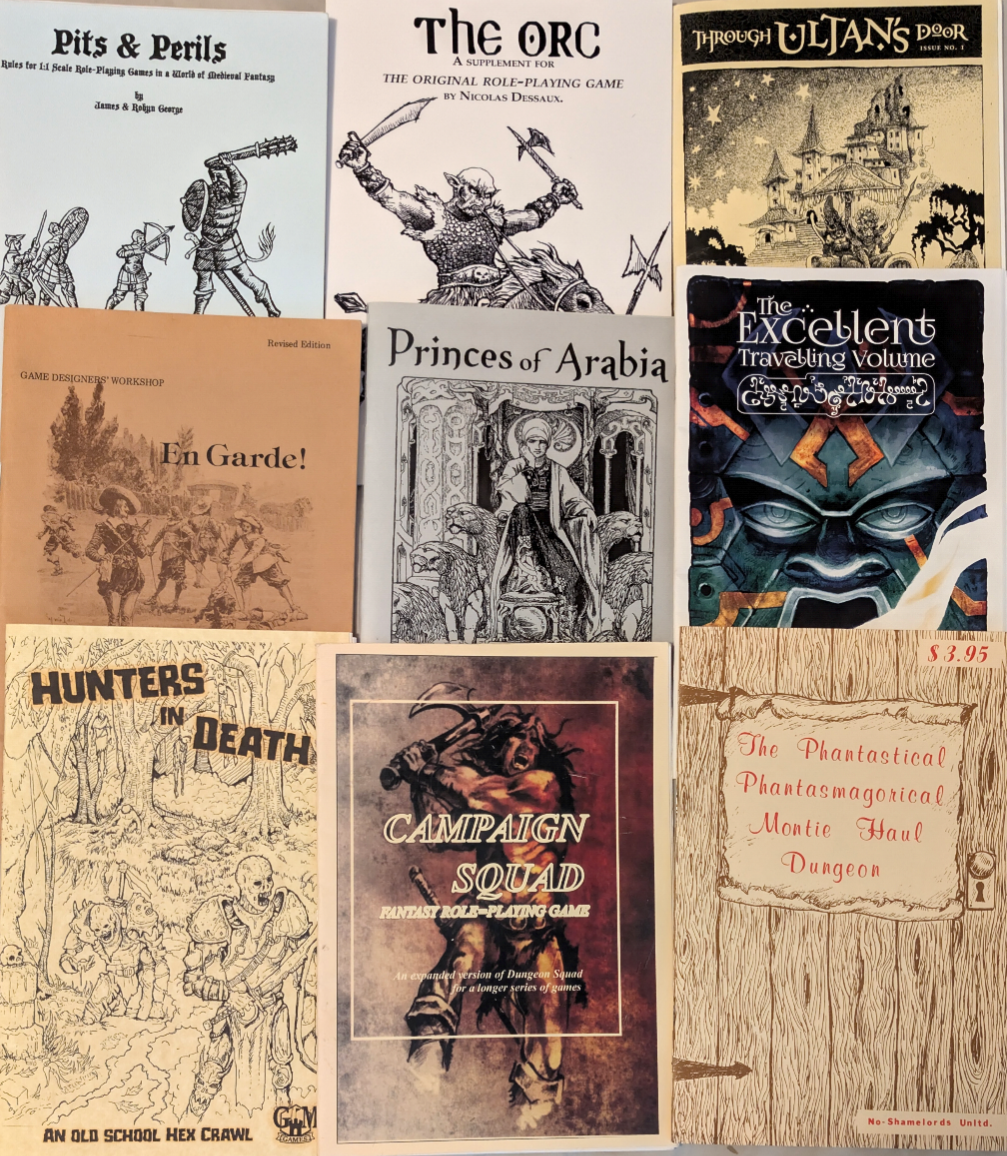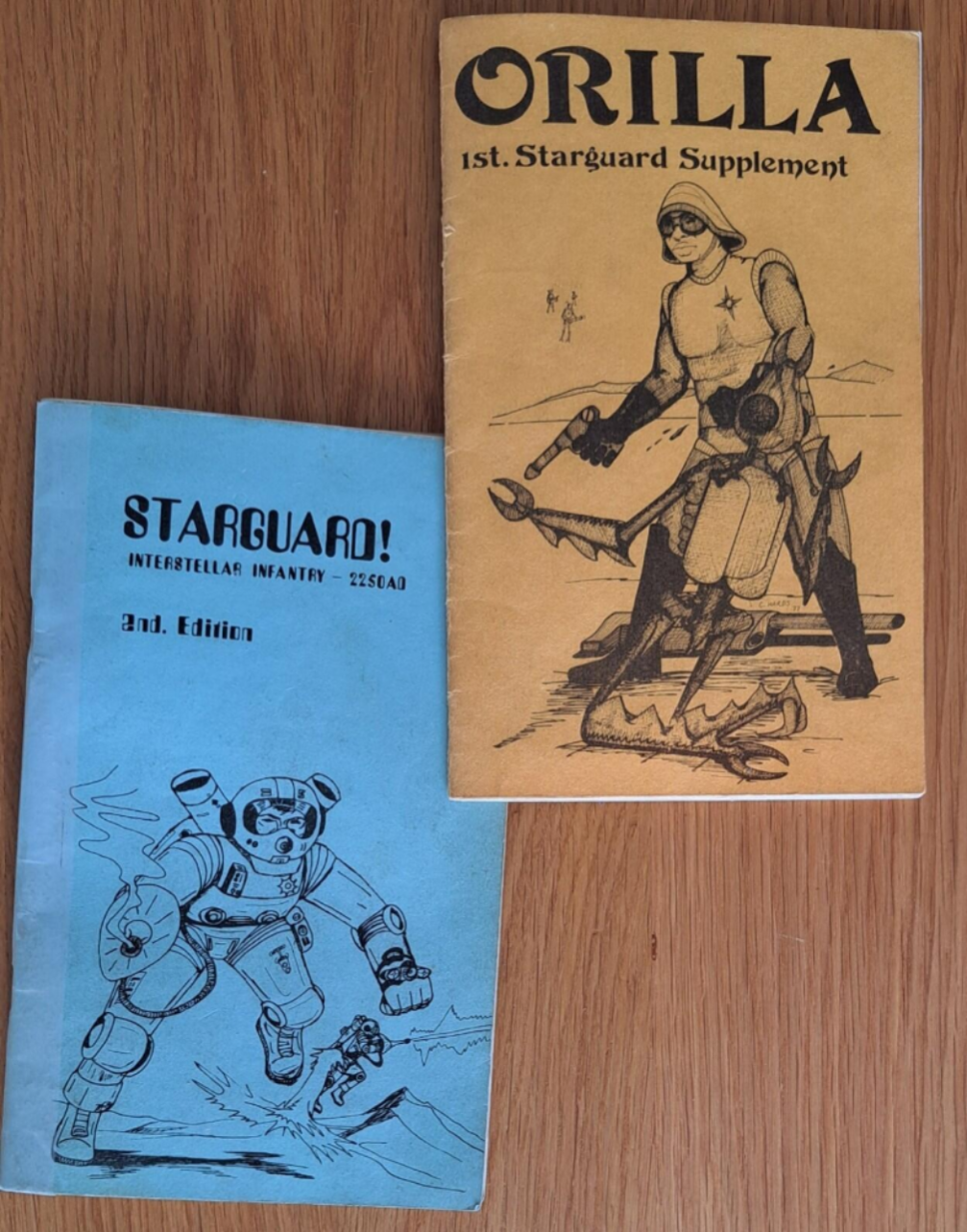...A5(ish) rule books in tiny print with folded card covers? Well, to be honest, at my age I'm not so keen on the tiny print, but the rest? Hell yes!
Nowadays of course, these old rule books look very amateurish. Indeed that's because a lot of them were in fact published by amateurs, or at least semi-professionals. The lovely original Dungeons and Dragons three little brown books, and the first supplements were done this way. Printed professionally but boxed up etc in Mr Gygax's basement. And this was the model for those first role players. Guidon Games and then TSR put their wargames rules books together like this. And there were maybe a dozen or so wargame rules publishers in the UK before that churning out these booklets.
But the spirit isn't dead yet. The do it yourself vibe shifted into 'zines and smaller publishers. Some like Olde House Rules and EMDT positively revel in the nostalgia. Great stuff all of it.
So, next time you have a fabulous idea for your RPG heartbreaker... how are you going to go about it?












